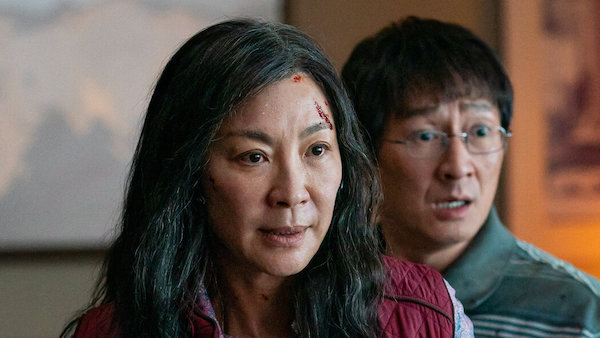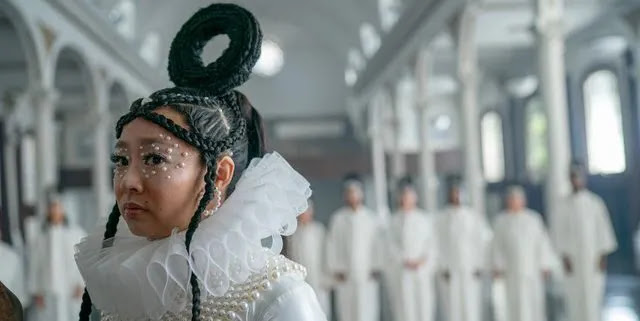In the last few years, there has been a lot of criticism about the Academy Awards being a whites-only club, out of touch with the modern diverse world. This has resulted in a significant decline in viewership and growing tension as people were boycotting the show over its lack of diversity. To help resolve this issue, Cheryl Boone Isaacs, an African American woman, was appointed to be president of the Academy and spearhead changes to make the Academy Awards more inclusive. This failed miserably the first year when, once again, the nominees were announced, and the actors and actresses nominated were all white, and the directors were all men. The call to boycott once again flared up, and tempers ran hot. Something had to change.
In the years since, the Academy branches have been expanded, old inactive voters were removed from their positions of power, and new, more inclusive blood was promoted. The results have been enlightening to say the least. Films like Moonlight, Fences, Lion, Hidden Figures, Get Out, Green Book, Black Panther, BlacKkKlansman, Parasite, Judas and the Black Messiah, Minari, Drive My Car, American Fiction, and Past Lives heavily featured non-White casts and were honored with Oscar nominations, some even winning the Best Picture award. On top of the greater diversity, there was also an uptick of more genre-bending films, experimental movies being considered for Best Picture, most recently Poor Things, a heavily stylized film that would have never been an Oscar contender under the old regime. In that same group came a low-budget multiverse film, right on the heels of the Marvel Cinematic Universe’s (MCU) own multiverse. Everything Everywhere All at Once released in the spring of 2022, well outside of Oscar season, yet it took the world by storm and rode a wave of increasing popularity all the way into a victory at the 2023 Oscars.
Alternate realities are nothing new. Star Trek had been doing it since the 60s, and it wasn’t a new concept then, either. The MCU brought the concept to the big screen again the previous year with Spider-Man: No Way Home and has tried to make a go at this concept ever since, to diminishing returns. When the trailer dropped for Everything Everywhere All at Once, the initial reactions were mixed, with some seeing this as a low-budget attempt to crib off of Marvel. But those dissenting opinions were quickly quelled as more and more clips from the film began to make their rounds. This was beginning to look like a quirky little indie action/sci-fi drama coming from a studio, A24, that already had a good, solid reputation for releasing interesting pictures.
The film also had two other things strongly going for it. The first was Michelle Yeoh, an Asian action superstar who came to pop culture thanks to her co-starring roles in some of Jackie Chan’s earlier films out of China and her foray into the popular action spy franchise, James Bond. Yeoh was a known commodity and had recently begun to show up again in some of the biggest franchises, including as a recurring guest star on another series that was dipping their toes in the multiverse, Star Trek: Discovery. Michelle Yeoh, while not a big-name star the way Tom Cruise or Brad Pitt is, was a bankable character actress and a likable presence.
The second thing going for this film was the return of Ke Huy Quan, formerly billed as Jonathan Ke Quan. Those of us who grew up in the early 80s remember Quan for his two major roles back then: Data in The Goonies and Short Round in Indiana Jones and the Temple of Doom. For those who don’t pay attention to the behind-the-camera part of filmmaking, Quan basically disappeared after that. He would show up in bit roles like in Encino Man but was mostly absent in front of the camera. For nearly twenty years, he was completely gone, lost to time like so many child actors are. Then he landed a small role in a Netflix movie, Finding Ohana. It was not much, but it was the beginning of a whole new era for the actor. Everything Everywhere All at Once not only brought him back into the forefront of audiences’ minds but it earned him an Oscar win for his performance and has led to even more roles since. It is nice to see Ke Huy Quan make a comeback after all this time, and quite honestly, I probably would have waited to see this film at home had I not known he was in it.
Had this film been nothing more than a quirky sci-fi film about the multiverse, it would have had a brief run in theaters and then disappeared into the home video market, forgotten amongst all the other films. But the filmmakers, Daniel Kwan and Daniel Scheinert, were aiming higher than a mere genre film. They wanted to tell a story about family dysfunction and healing, about self-worth and personal satisfaction. The plot of this film is at times absolutely bug-nuts, and there are moments that are so silly and ridiculous that it shouldn’t work, yet it does. By utilizing the concept of the multiverse, they opened a way for a movie about personal drama, depression, and divorce to also include people with hot dogs for fingers and a chef with a raccoon under his chef’s hat controlling him like Remy from Ratatouille. There is also an emotional scene told entirely in subtitles, a conversation held between two rocks. Everything Everywhere All at Once is an apt title.
The central drama is that of a mother, Evelyn (Michelle Yeoh), who has led an unfulfilling life filled with dreams she never sticks with long enough to get good at. Each of these failed ventures and opportunities branches off into an alternate reality where she is a professional in one of these things. For her, however, life is dull and frustrating, running a struggling laundromat with her husband, Waymond (Ke Huy Quan), who has had enough and is reluctantly seeking a divorce. On top of that, the business is being audited by the IRS and is facing repossession by IRS inspector Deirdre (Jamie Lee Curtis).
But something has happened in the multiverse, and a mysterious figure, Jobu Tupaki (Stephanie Hsu), has become omnicidal and nihilistic, a threat to the entire multiverse. An alternate universe version of Waymond shows up, showing Evelyn a way to tap into the skills of alternate versions of herself and use them to fight back. But things are more complicated than that, even, as Jobu Tupaki is an alternative version of her own estranged daughter, Joy, and finding a way to repair her relationship with Joy may be the only way to stop Jobu from destroying everything.
As crazy as it sounds to even describe the plot of this film, it’s even more so to see it. Yet it works, somehow, thanks in large part to the sincere performances of the leads. This is augmented by a wonderfully over-the-top performance by the ever-reliable James Hong, who seems to be channeling his earlier portrayal of Lo Pan in Big Trouble in Little China. No matter how crazy Everything Everywhere All at Once gets, it never loses the heart of the story, which is all about the relationships between parents and their kids. Yeoh and Hong sell that just as much as Yeoh, Quan, and Hsu do. This is a message that transcends age, race, and gender. It is universal, which is one of the many reasons this film hit home for so many people.
Evelyn’s words towards the end of the film ring true, even if you don’t share her beliefs or her values. She confronts her daughter, wishing to mend things, and at first, she is shut down. Joy expresses her frustration with her mother’s intolerance of her chosen lifestyle, her criticisms of her appearance, and everything else and tells her to let her go her separate way. For a moment, Evelyn almost does. Then she catches herself and speaks up again: “Wait. You are getting fat. And you never call me, even though we have a family plan. And it’s free. You only visit when you need something. And you got a tattoo, and I don’t care if it’s supposed to represent our family. You know I hate tattoos. And of all the places I could be, why would I want to be here with you? Yes, you are right. It doesn’t make sense…maybe it’s like you said. Maybe there is something out there, some new discovery that will make us feel like even smaller pieces of s***. Something that explains why you still went looking for me through all the noise. And why no matter what, I still want to be here with you. I will always, always want to be here with you.”
I cannot express any better the themes of this movie than to quote that line of dialogue from the picture. It is so right and so raw, and it depicts the feeling any parent who sees their child drifting away from them feels. This is one of the strangest films to ever get an Academy Award nomination, let alone win the Best Picture of the year. It’s the type of film that would have never been considered a decade ago, but thanks to the changes being made behind the scenes, it allowed this truly amazing film to not only find a bigger audience but receive the accolades it truly deserves.
Academy Award Nominations:
Best Picture: Daniel Kwan, Daniel Scheinert, and Jonathan Wang (won)
Best Director: Daniel Kwan and Daniel Scheinert (won)
Best Actress: Michelle Yeoh (won)
Best Supporting Actor: Ke Huy Quan (won)
Best Supporting Actress: Jamie Lee Curtis (won)
Best Supporting Actress: Stephanie Hsu
Best Original Screenplay: Daniel Kwan and Daniel Scheinert (won)
Best Film Editing: Paul Rogers (won)
Best Original Score: Son Lux
Best Original Song: “This is the Life” by Ryan Lott, David Byrne, and Mitski
Best Costume Design: Shirley Kurata
____________________________________________________
Release Date: March 25, 2022
Running Time: 139 Minutes
Rated R
Starring: Michelle Yeoh, Stephanie Hsu, Ke Huy Quan, James Hong, and Jamie Lee Curtis
Directed By: Daniel Kwan and Daniel Scheinert










Comments
Post a Comment